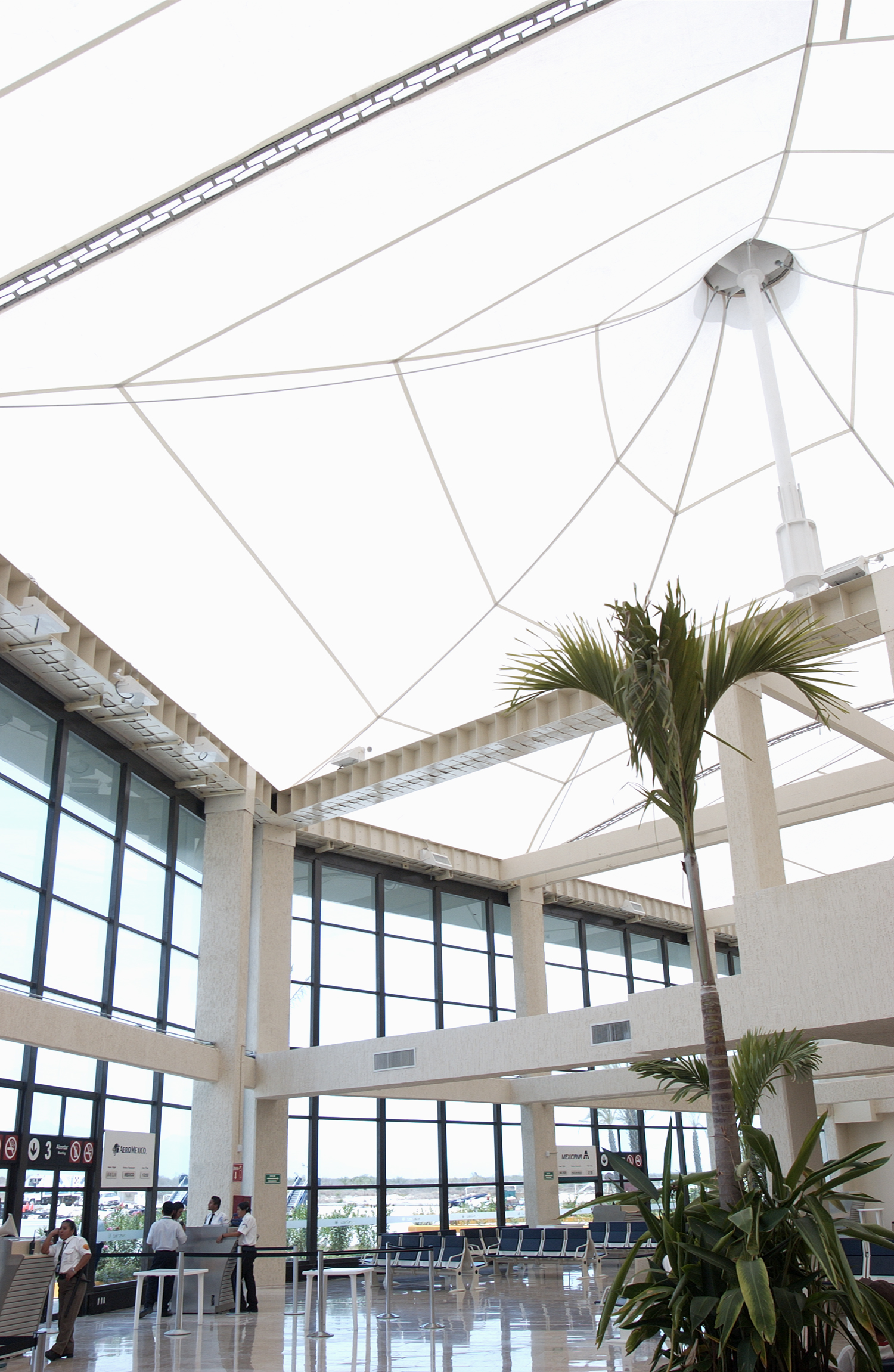ENERGY USE & LIGHTING
Tensile membrane structures have high sun reflectivity and low absorption of sunlight. This greatly reduces the solar energy and heat gain that enters the structure, thus resulting in less energy used within a building. The membrane allows for natural daylight to enter into the interior making it a comfortable space while reducing electrical energy costs as there is significantly less use of artificial lighting during the day time. These beneficial characteristics have made fabric membrane readily applicable for use in temperate or hot climates with high solar radiation.
In addition, liner membranes and insulated tensioned membrane composite systems, such as Tensotherm™ (which uses an aerogel insulating blanket), go even further to give tensile membrane roofing applications much desired thermal efficiency in both cold and hot climates.
Summary of Energy Use and Lighting
Performance Characteristics of Membrane
| Membrane Systems | Solor Reflectance | Solor Absorption | Solor Transmission | R-Value (FT2hrF/BTU) | U-Value (W/m2K) | Solar Heat Gain Coefficient (SHGC) G-Value |
|---|---|---|---|---|---|---|
| PTFE Fiberglass | 72-75% | 10-12% | 10-21% | 0.78 | 7.2 | 14-28% |
| PVC Membrane | 75-78% | 13-22% | 4-10% | 1.0 | 5.6 | 8-14% |
| ETFE Film | *5-60% | *1-2% | *20-90% | Single Layer: 1.0 Double Layer: 2.0 Triple Layer: 2.9 | Single Layer: 5.7 Double Layer: 2.9 Triple Layer: 1.9 | **Single Layer: 80% Double Layer: 65% Triple Layer: 50% |
| Insulated Tensioned Membrane | 76% | 10-12% | 8mm: 3.9% 16mm: 2.6% 24mm: 1.8% | 8mm: 4.9 16mm: 7.5 24mm: 10.1 | 8mm: 1.14 16mm: 0.75 24mm: 0.55 | 8mm: 5.3% 16mm: 3.4% 24mm: 2.3% |
*Depending on the number of layers, color and silver frit printing.
**Depending on the density of the silver frit printing, these values are arbitrary.


